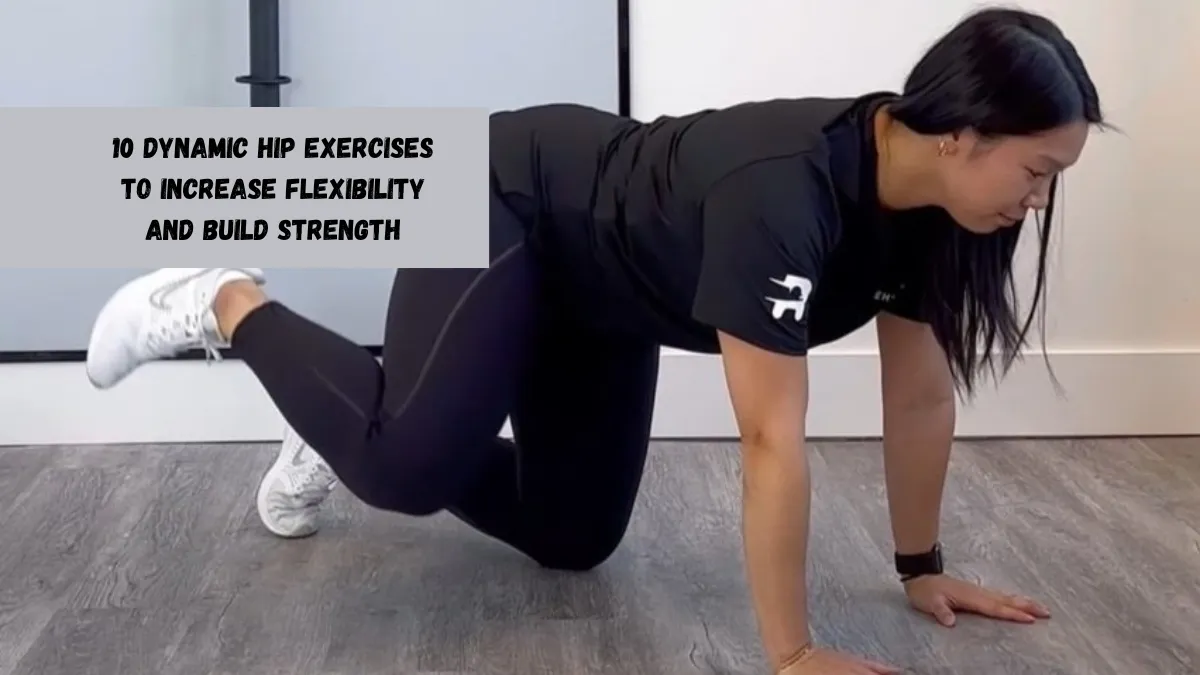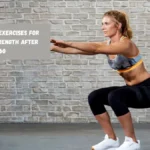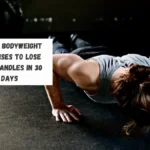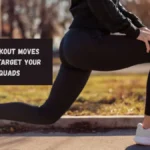If you’re looking to move better, feel stronger, and prevent injury, focusing on your hips is essential. The hips are one of the most important joints in the body, supporting nearly every movement you make—from walking and running to bending and lifting. However, long hours of sitting and poor posture can cause tightness and weakness in this area. That’s where dynamic hip exercises come in.
Unlike static stretches, dynamic movements activate muscles, improve flexibility, and build strength all at once. In this blog, we’ll guide you through 10 of the best dynamic hip exercises to increase your flexibility and enhance lower-body strength. Whether you’re an athlete, fitness enthusiast, or just starting out, these exercises will help improve your mobility, boost performance, and reduce the risk of injury. Ready to loosen up those hips and move with more ease? Let’s dive into these effective, expert-approved hip exercises for better flexibility and strength.
Hip Circles
Doing hip circles is a great way to warm up quickly and improve the movement of your hip joints. Standing straight with your feet shoulder-width apart and your hands on your hips is how you do this exercise. Do 10 reps of slowly rotating your hips in a big circle, starting clockwise and then going counterclockwise for another 10 reps. This move works the glutes, lower back, and hip flexors, making them loosen up and get ready for more intense activities.
It also works out the muscles around your hips, which makes you more stable and helps you keep your balance. Hip circles are great for sports and people who sit for long amounts of time because they help loosen up the muscles and improve posture. Adding hip circles to your warm-up exercise can help keep you from getting hurt and make your lower body work better overall.
Leg Swings
One of the best active stretches for making your hips more flexible and improving their range of motion is to do leg swings. For balance, stand next to a wall or something rigid. Controlled swing one leg forward and backward while keeping the upper body straight. Do 10 to 15 swings on each leg. The hip flexors, hamstrings, and glutes are all worked out by this action, which also increases blood flow to the muscles in the lower body.
Leg swings also help keep your joints lubricated, which is important for moving easily and without pain. This practice is especially good for you to do before running, lifting weights, or any other action that uses your lower body. When you do leg swings daily, they not only stretch the muscles in your hips and thighs, but they also make them stronger. To keep from straining or overextending, it’s important to stay in control of the action.
Lateral Lunges
Lateral lunges work the inner and outer legs as well as the glutes, which makes the hips more flexible and strong. Stand tall with your feet about hip-width apart. Take a step to the right with your right foot, bending your right knee and pushing your hips back. Your left leg should stay straight. Do it again on the other side after going back to the middle. Do 10 to 12 reps on each leg. This exercise makes the abductors and adductors of the hip stronger.
This improves horizontal stability and lowers the risk of hip and knee problems. Because they work more than one muscle group at once, lateral lunges also improve balance and agility. They help players and people who want to get better at moving from side to side, like in basketball or tennis. Doing side lunges regularly can help your hips move more freely and give you more strength for everyday tasks.
High Knees
High knees work the hip flexors, core, and leg muscles in a lively way. They are also good for improving flexibility. Stand with your feet about hip-width apart and push your knees as high as you can toward your chest. Then stand still and run. To keep your balance and beat, pump your arms. Do the move for one minute or thirty seconds. This practice makes your heart beat faster and warms up the muscles around your hips.
High knees are a good way to improve balance in the lower body, make the hips more flexible, and get the body ready for quick actions. It’s also a great way to get stronger in your heart and lungs. People who do high knees the right way can improve their balance and speed when they run. Doing this as part of your workout routine can help you move better in sports and in everyday life.
Walking Lunges with a Twist
Walking lunges with a spin work the hips, glutes, quads, and core by adding a rotating element to the basic lunge. To start, take a step forward and spring forward. As you go down into the lunge, turn your upper body toward the front leg. Go back to the beginning and do it again with the other leg. Do 10 to 12 reps on each leg. The twisting action makes the hips more flexible and works the obliques, which support the hips and back.
This move also makes your balance and timing better. Functional training is great for walking lunges with a twist because they are like moves you do in sports and everyday life. This version works more muscle groups because it includes spin. This makes the hips and core stronger and more stable. Regularly doing this exercise can lower your risk of getting hurt and help you do better in activities that need you to turn or shift.
Hip Flexor March
The hip flexor march is an active workout that works the core, lower abdominal muscles, and hip flexors. Lay on your back with your knees bent and your feet flat on the floor to start. Hold your core tight and lift one knee to your chest while pressing your lower back into the ground. Slowly bring it down, then move on to the other leg. Do 12 to 15 reps on each leg.
This move makes the hip flexor muscles stronger and more coordinated, which is important for walking, running, and climbing stairs. It also helps fix muscle weaknesses that can cause back pain or bad posture in the hips. The controlled action makes muscles stronger and improves the way the hip joint works. The hip flexor march can help loosen up and improve movement in the front of the hips when it is part of a warm-up or recovery exercise.
Standing Hip Abduction
Standing hip abduction is a simple exercise that works well to strengthen the gluteus medius and make the hips more stable. Hold on to a wall or something strong for support as you stand tall with your feet together. Keep your core tight and lift one leg out to the side without turning your hips. Bring the leg down slowly and do this 12 to 15 times on each side. People who sit for long amounts of time will benefit from this exercise because it helps work out muscles that don’t get used very often.
By making these muscles stronger, you can improve your balance and feel less pain in your lower back. It also keeps the pelvis stable while you move, which is important for sports and walkers. Standing hip abduction makes the hips more flexible and protects against accidents that can happen when hip muscles are weak or out of balance. Adding this exercise to your schedule can help you get stronger and more flexible over time.
Glute Bridges
Glute bridges are a strong workout that opens up the hips and works the glutes, legs, and lower back. Lay on your back with your feet hip-width apart and your knees bent. Hold your core tight and push your feet into the floor as you move your hips up. Hold the position at the top for a moment, then slowly move down. Do 12 to 15 reps. This move helps to strengthen the back muscles and fix problems that happen when you sit for long periods of time.
Glute bridges help your hips extend and give you better balance. They also ease stress in the lower back and make the pelvis more stable. When you train regularly, you can get stronger hip thrusts, better running mechanics, and more support for your back. Also, glute bridges are a low-impact workout that can be done by people of all fitness levels.
Fire Hydrants
The upper hips, glutes, and core are worked out by fire hydrants, a powerful bodyweight exercise. Get down on all fours with your knees under your hips and wrists behind your head. Lift one leg out to the side, like a dog would, while keeping your knee bent. Stop for a moment at the top, and then bring it back down. Do this 12 to 15 times on each side. This exercise targets and improves the medius and minimus gluteus muscles, which are important for keeping the hip stable and moving laterally.
Fire hydrants are another way to work out your core and improve your balance. The movement makes the hips more flexible and can fix muscle weaknesses, especially in the legs. This move is great for runners and other athletes who need to keep their hips strong and stable. When you train with fire hydrants regularly, you can improve your balance, get rid of knee pain, and gain more control when doing dynamic movements.
Spiderman Stretch
The Spider-Man stretch is a more difficult dynamic move that works the hamstrings, hip flexors, and groin muscles. Do a push-up to start, and then move your right foot away from your right hand. Let your hips fall a little and hold for a moment. Go back to where you started and do it again on the other side. Do 8–10 reps on each leg. This stretch makes the hips more flexible and increases their range of motion.
It also warms up the muscles around the pelvis and legs. Because it moves like sports moves, it’s great for warming up before sports. The Spider-Man stretch works the core and makes it easier to balance and control your body. Doing this action regularly can help you feel less stiff, avoid injuries, and do better in tasks that need quickness and flexibility in your lower body. This is a full-body stretch that gets the lower body ready for movement.
Bottom Line
Incorporating dynamic hip exercises into your routine is one of the best ways to improve flexibility, build strength, and support overall lower body function. These 10 exercises can enhance mobility, prevent injury, and help you move with greater ease in everyday activities.
Whether you’re warming up for a workout or simply aiming for better joint health, dynamic hip movements offer a safe and effective solution. Make them a regular part of your fitness routine to experience long-term benefits. Stay consistent, move mindfully, and enjoy the improved strength and flexibility your hips were made to have.
FAQs
Why are dynamic hip exercises better than static stretches?
Dynamic exercises warm up your muscles and increase blood flow, making them ideal for improving flexibility and performance before physical activity.
How often should I do hip exercises?
For best results, aim to include hip exercises 3–4 times per week, especially as part of your warm-up or mobility routine.
Can these exercises help with lower back pain?
Yes, strengthening and mobilizing the hips can relieve stress on the lower back and improve overall posture.
Do I need equipment for dynamic hip exercises?
No, most dynamic hip exercises use just your body weight, making them easy to do at home or anywhere.




